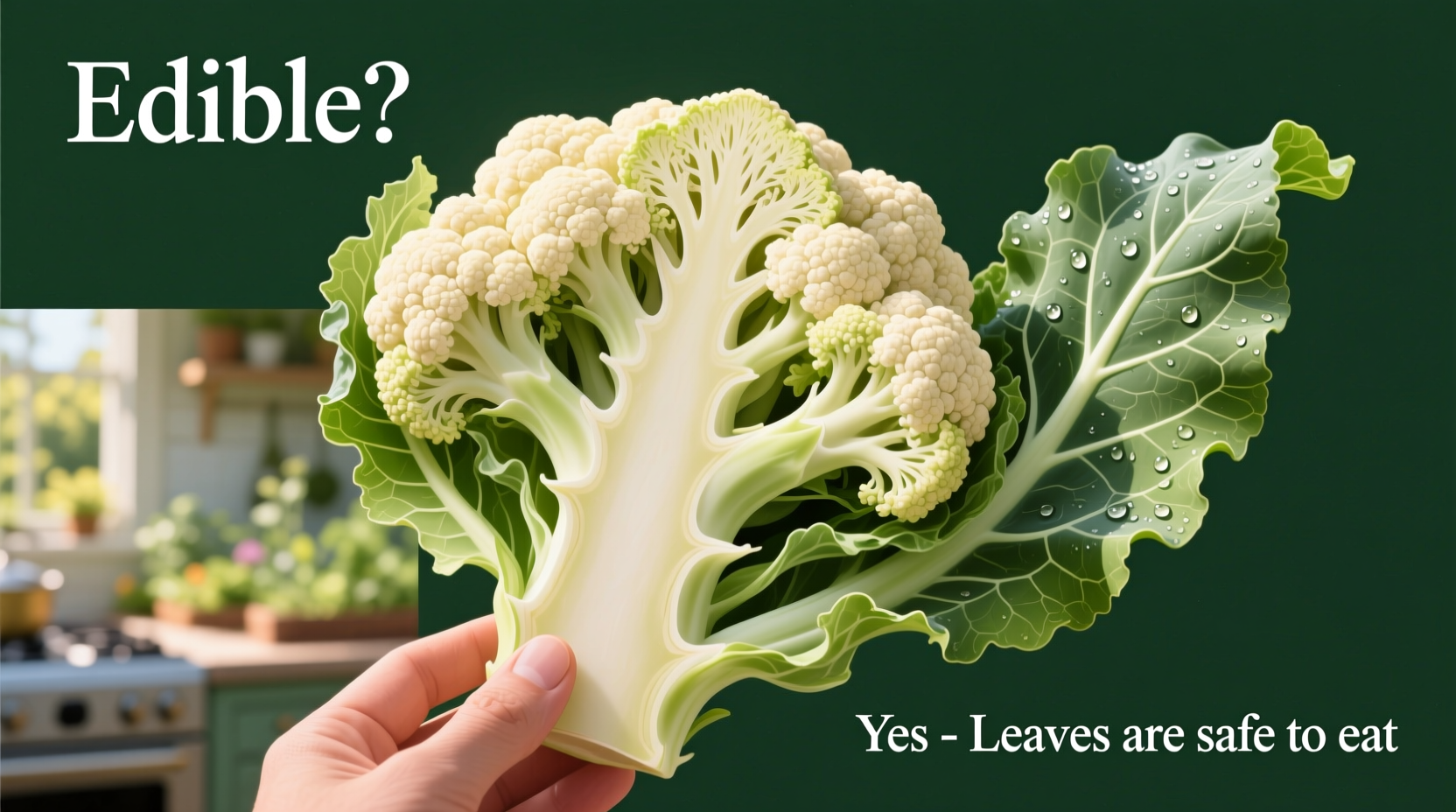Yes, you can absolutely eat cauliflower leaves—they're not only safe but packed with nutrients and culinary potential. Often discarded as waste, these leafy greens offer a mild, slightly earthy flavor similar to kale or collards, making them a versatile addition to your cooking repertoire.
Why You've Been Missing Out on Cauliflower Leaves
Most grocery shoppers toss cauliflower leaves without a second thought, unaware they're throwing away a nutrient-dense ingredient. Food waste statistics from the USDA reveal that up to 30% of edible produce gets discarded unnecessarily, with vegetable greens ranking high on the list. These leaves contain more fiber and certain vitamins than the florets themselves, turning what you considered trash into a kitchen treasure.
Safety First: Debunking the Myths
Unlike some plant leaves (like rhubarb or tomato), cauliflower leaves contain no toxic compounds. The FDA confirms all parts of Brassica oleracea varieties—including broccoli, kale, and cauliflower—are safe for human consumption. The only precaution? Wash thoroughly to remove soil particles, especially if you've grown them yourself.
| Nutrient | Cauliflower Leaves (per 100g) | Cauliflower Florets (per 100g) |
|---|---|---|
| Vitamin K | 350% DV | 20% DV |
| Vitamin C | 120% DV | 70% DV |
| Dietary Fiber | 3.2g | 2.0g |
| Calcium | 150mg | 20mg |
Nutritional data sourced from USDA FoodData Central (2023)
Unlocking Flavor: How to Prepare Cauliflower Leaves
Treat these leaves like other hearty greens. For optimal texture and taste:
- Young leaves: Sauté with garlic and olive oil for 3-5 minutes—they cook faster than mature leaves
- Mature leaves: Remove tough central ribs before cooking, then braise for 10-15 minutes
- Raw applications: Finely shred tender young leaves for salads or pesto
- Storage tip: Keep leaves attached to the head until use—they stay fresher longer

Waste-Not Cooking Techniques
Professional chefs like those at Blue Hill at Stone Barns have championed "root-to-stem" cooking for years. Here's how to incorporate cauliflower leaves into your routine:
- Stir-fries: Add chopped leaves during the last 5 minutes of cooking
- Green sauces: Blend with herbs for vibrant cauliflower leaf chimichurri
- Stock enhancement: Simmer with onion peels and herb stems for vegetable broth
- Wraps: Use large blanched leaves as gluten-free alternatives to tortillas
Common Misconceptions Addressed
"They taste bitter" - Properly cooked leaves have a mild, slightly sweet flavor. Bitterness only occurs when overcooked or from extremely mature plants.
"They're not nutritious" - Research from the Journal of Agricultural and Food Chemistry shows brassica leaves contain higher concentrations of glucosinolates—compounds with potential cancer-fighting properties—than the florets.
Maximizing Your Cauliflower Harvest
If you grow your own, harvest leaves progressively throughout the growing season. The University of California Cooperative Extension confirms that removing 1-2 outer leaves weekly actually strengthens the developing head by redirecting the plant's energy. This practice, used by Mediterranean farmers for centuries, gives you continuous greens while improving your main harvest.
Putting It All Together: Simple Recipe Framework
Transform your next cauliflower purchase into a zero-waste meal:
- Separate leaves from the head
- Chop florets for roasting
- Sauté leaves with aromatics as a side dish
- Use the core in stir-fries or vegetable stock
This approach aligns with sustainable cooking practices gaining traction worldwide. According to a 2024 Food and Agriculture Organization report, utilizing vegetable greens could reduce household food waste by up to 15%—that's significant for both your budget and the planet.
Final Verdict: Stop Throwing Away Free Nutrition
Cauliflower leaves aren't just edible—they're a nutritional powerhouse waiting to elevate your meals. By incorporating these often-discarded greens, you'll add variety to your diet, reduce food waste, and discover new flavor dimensions in a familiar vegetable. Next time you're prepping cauliflower, remember: what you considered waste might just be your next favorite ingredient.











 浙公网安备
33010002000092号
浙公网安备
33010002000092号 浙B2-20120091-4
浙B2-20120091-4